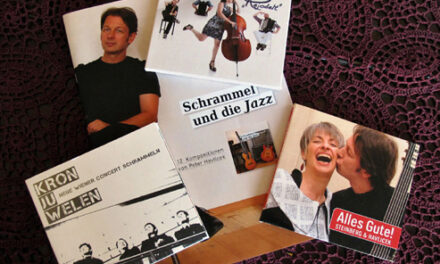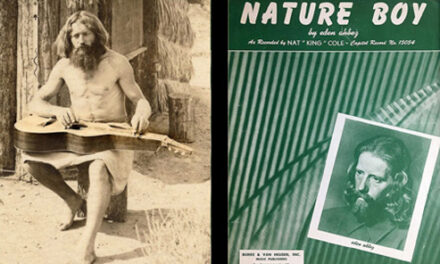What a great sub-title for the latest repackaging of the 1927-29 78rpm recordings of the legendary gospel singer/fretless zitherist Washington Phillips.

Readers may recall my report and analysis of the 2015 newspaper clipping discovery by reporter Michael Corcoran that revealed Phillip’s original instrument and its colorful name. The new release by Dust to Digital (another great name) includes newly mastered versions of the best copies of the original 78s that could be located (definitely an improvement) and comes in a wonderful little hardback 76-page illustrated book by Corcoran and company.
There are a few new photos giving it all a sense of time and place and a lot more background on Phillips’ life (and death) and his family. I particularly liked Corcoran’s investigation of the logistics of the Dallas recording sessions (16 train stops away from isolated Simsboro, Wash likely became involved through Blind Lemon Jefferson, with whom he sometimes played).
The book also includes all the Columbia session and release dates and even sales figures. Kudos for including the original Columbia “recording label copy” sheets, each with the cryptic “Novelty accomp.” typed in under “Vocal.”
As in his previous articles, Corcoran recaps the “Ooops! Not a Dolceola” verdict, now quoting his recent Manzarene newsclipping find as “once and for all” putting the Dolceola legend to rest. As far as I’m concerned, he and a team of zither researchers had already put it to rest through exhaustive research, but nice to have this final nail in the coffin.
Those fretless zither nerds were of course me, Kelly Williams and the late Garry Harrison, and we’re credited by Corcoran in the new book. He refers to us as “musicians” (true enough), though I would’ve preferred “musical instrument researchers” or “scholars” – the hat we were certainly wearing in the context of our thorough, detailed investigation of the Phillips instruments and recordings. (After all, it was “musicians” who led us down the long Dolceola detour.)
I’m defensively nitpicking of course, and, after reading Corcoran’s new book thoroughly, I realized that – for this project’s audience – he was probably right in not going into any detail on the instruments; the particulars of fretless zithers undoubtedly remain too complicated for the average layperson. (Case in point: Corcoran himself confusingly calls the two re-purposed production instruments “fretless zithers and celestaphones” when he meant “a Phonoharp and a Celestaphone [missing its hammer attachment], two types of mass-produced fretless zithers.”)
Similar confusion arises from the question of whether Phillips played his original 1907 “homemade Manzarene” on the recordings, which the packaging seems to imply (and at least one reviewer assumed). Here again, Corcoran left himself some wiggle room by speculating that Phillips perhaps took the two 1928-pictured fretless zithers out of the 1907-described 2’ x 3’ box (which a different reviewer now repeats as fact). To his credit, nowhere does Corcoran present any of the instrument scenarios as fact, nor even state his opinion; he wisely leaves it unanswered and up to the reader (perhaps unwisely; I wouldn’t expect any reader to fill in the gaps without first accessing the blogs and articles of Garry and myself).
To reiterate my own opinion for the record: Again, I strongly believe the original large 1907 homemade box zither and the two recorded “conjoined” production zithers were completely different instruments – although the tunings and concepts may indeed have been very similar. Then, after the recordings sessions, Phillips probably configured still another instrument – this time smaller, perhaps even utilizing one of the two fretless zithers.
That being said, I finally came to the conclusion that the slightly romanticized implications in Corcoran’s new mini-book are fine and perhaps even true, if unprovable. For whether it was Phillips’ giant homemade box or his ingeniously re-purposed production fretless zithers or whatever it was that his neighbors saw him playing in his last days, each became, in turn, simply the latest realization of his singular invention, “the Manzarene.” (I’m picturing the record company exec patiently nodding his head as he enters into the form “novelty accomp.”)
In the end, all my nerdy instrument discussion above is largely irrelevant. The unprecedented sounds, ethereal effects and the resulting music are all that matter. And, as Corcoran quoted in his book from my own web article: “Happily for the legend, it is also all but impossible for any of us to duplicate (Phillips’) self-styled virtuoso techniques on a Phonoharp-type zither!
Post Script: For readers who are curious about other fretless zither recordings, there are a many excellent tunes here that Garry recorded on some of his collection before he left us. And in 1995, my own “Holly & the Ivy” on A Christmas Collection featured six different FZs in a non-traditional setting.






Very cool info and music, G!